8 Common Questions About Suet for Birds
Updated: Nov. 07, 2022
Seeds, fruits, fats, nuts and more create a calorie-dense treat for birds. Here’s how to serve suet for birds. Learn what birds eat suet.
Our editors and experts handpick every product we feature. We may earn a commission from your purchases.
All About Suet for Birds
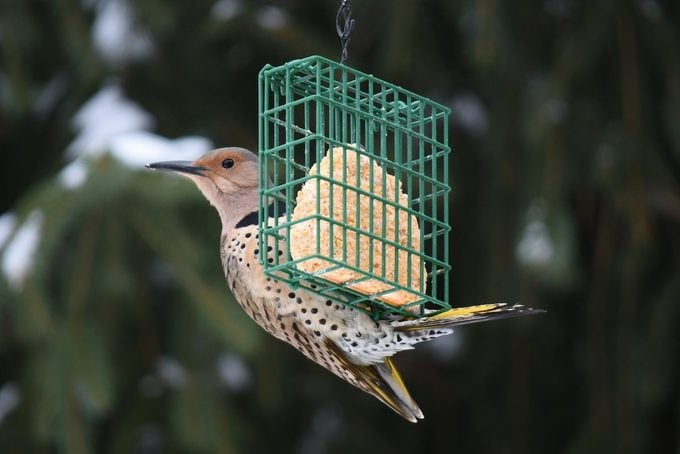
Fall offers lots of fantastic bird-watching opportunities. Leaves begin to drop, making it easier to see treetop visitors, and it’s finally cool enough to set out a favorite treat: suet for birds. A high-fat, protein-packed offering, it attracts both insect-eating species and omnivores, all while providing the perfect amount of calories to help birds flourish in colder weather.
“At different times of the year, birds need different nutrients,” says Ken Elkins, the community conservation manager for Audubon Connecticut. “Suet can start to be valuable to birds in the fall, not just the winter.”
And while suet is tantalizing for birds, it’s great for bird-watchers, too, as it brings new species to your backyard for a closer look. “Suet is one of those feeding experiences where it keeps them there, in view, a little longer,” Ken says.
Ken notes that the suet you serve won’t replace a large part of a bird’s diet; the birds are still going to find a lot of natural food around them. He says, “If you are really trying to attract a diverse group of birds, think about having plants in your backyard to provide the foods they need throughout the season and to attract more insects.”
Get the answers to commonly asked questions about serving suet for birds.
1. What Is Suet for Birds?
From a technical perspective, suet is specifically the raw fat around kidneys and loins, mostly in beef. Because it’s high in fat, it gives birds lots of energy, which is especially helpful in cold weather. While suet is typically made from rendered animal fat, some bird food suppliers make plant-based options with vegetable shortening or nut butters. The fats are mixed with seeds, oats, fruits, mealworms and more—all ingredients you can try out in your own recipe at home.
Check out proven tips for attracting birds with suet.
2. What Are Suet Cakes for Birds?
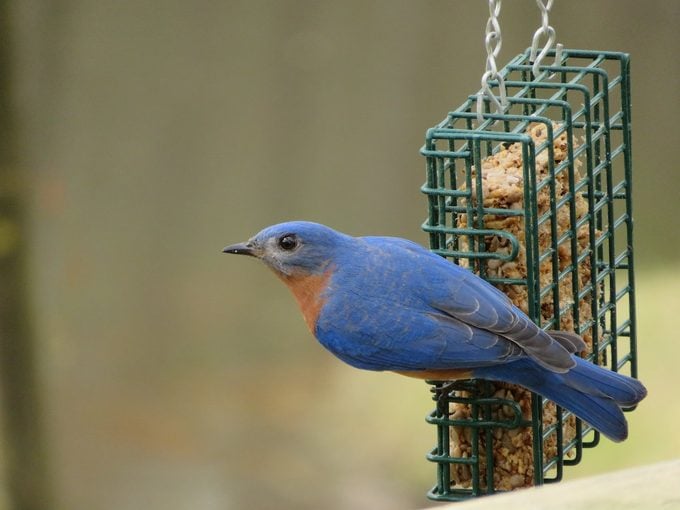
Suet cakes are actually what most people refer to as suet. They are square shaped blocks usually made up of a mixture of things, including suet (or rendered beef fat) as a primary ingredient. Other ingredients in suet might include peanut butter, peanuts, birdseed and cracked corn.
Learn how to make birdseed suet cupcakes.
3. Should I Make Suet or Buy It?
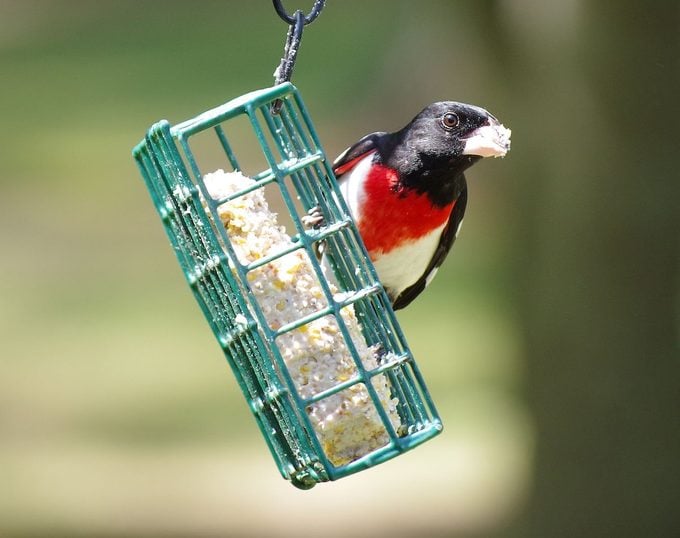
Whether you make your own or buy it from a store is up to you. When buying suet cakes from the store, shop local or from family-based suppliers so you can ask questions regarding their ingredients and melting temperatures. Be sure to also check the ingredients for palm oil, as palm oil plantations cause deforestation, affecting wild birds and other wildlife globally.
Of course, suet should have actual suet (or rendered beef fat) listed as an ingredient. If you want to make your own, hit up your local butcher shop and ask them to buy the suet. It should be fairly inexpensive, and you can be sure it’s what you need for the birds.
Great suet is all about the right consistency. A good base is 1 cup of suet and 1 cup of peanut butter. (It’s a myth that birds will choke on peanut butter, so don’t hesitate to include it!) Melt over low heat, and mix in 1/2-cup of cornmeal and 1/4-cup of oats. Next, add 1/4-cup of items like birdseed, nuts or berries. Freeze in muffin tins or small containers until you’re ready to use it. Check out more homemade suet recipes.
4. What Is the Best Way to Serve Suet to Birds?
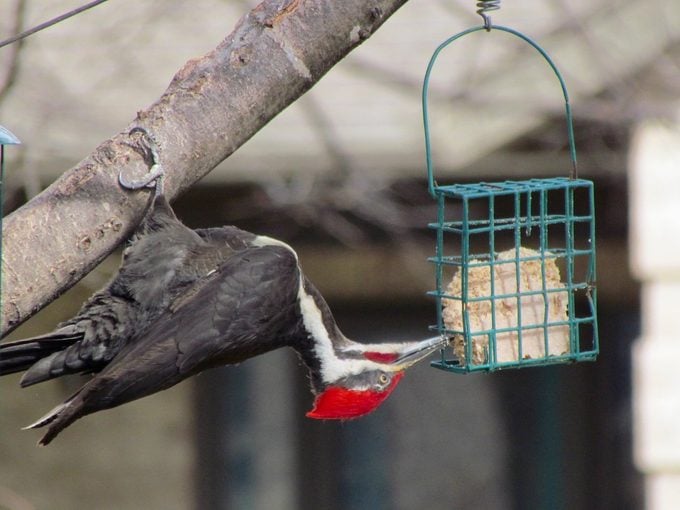
In the simplest form, you can just smear suet onto a branch or a hollowed log—no special feeder required. Another option is a cage feeder, which you can pick up for a few bucks. This definitely does the trick without spending a lot of money. Finally, if you want to maximize your real estate, look for a special suet feeder that will hold several suet cakes or blocks at once.
5. Where to Hang a Suet Feeder
When it comes to placement, hang suet in a visible area about 10 to 12 feet from shrubs, trees or another protected perching spot. For feeders with windows nearby, remember to place the suet either within 3 feet of the glass or farther than 30 feet away to keep birds safe from potential collisions. Also, think about what animals live in your neighborhood before you decide where to place your feeders full of homemade goodness.
Check out the 10 types of bird feeders you need in your backyard.
6. What Birds Eat Suet?
You can attract a wide range of birds that eat suet, including chickadees, nuthatches, wrens, thrushes, creepers, thrashers, jays, and nearly all woodpeckers, including flickers. Even if you haven’t seen these birds in other seasons, try again in fall and winter. You’ll likely attract new visitors.
Discover the 4 foods you should feed birds in winter.
Red-Headed Woodpecker
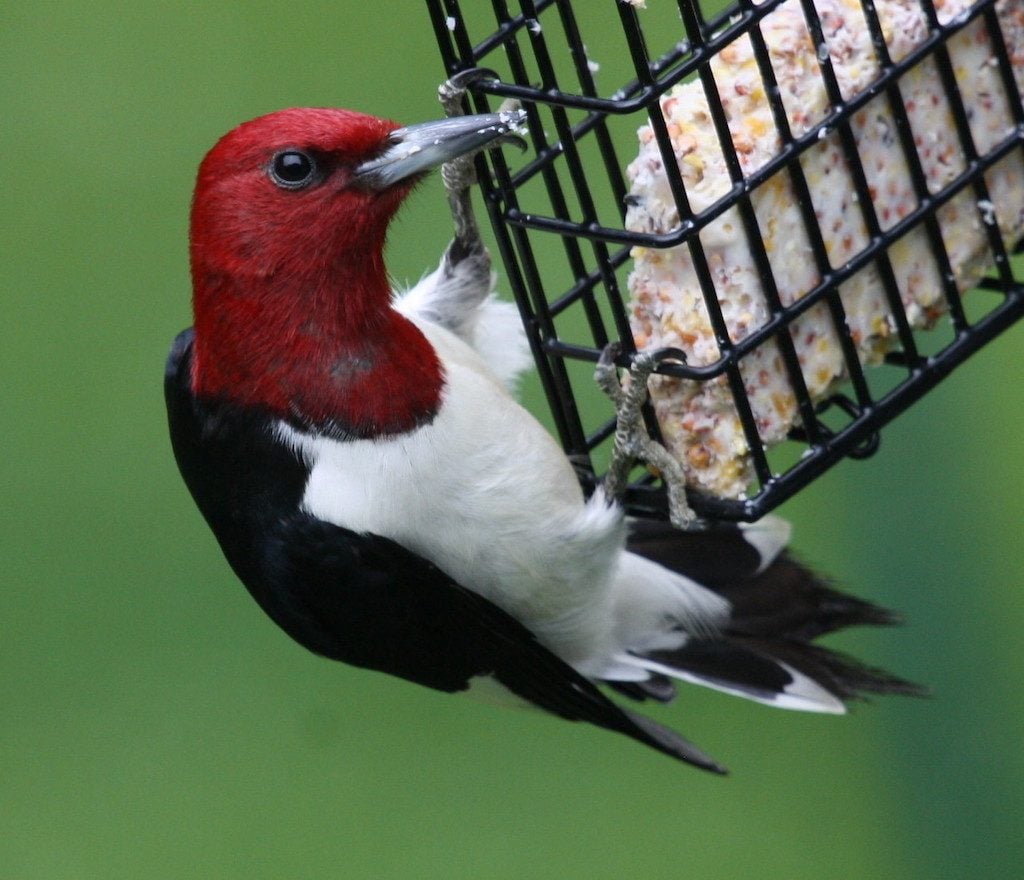
Among the brightest suet lovers on the block, red headed woodpeckers are medium-sized birds and flaunt a completely crimson head. They are most likely to visit feeders in winter and are drawn to oak, beech and other trees that produce nuts and seeds.
Check out the best foods for woodpeckers.
Canada Jay
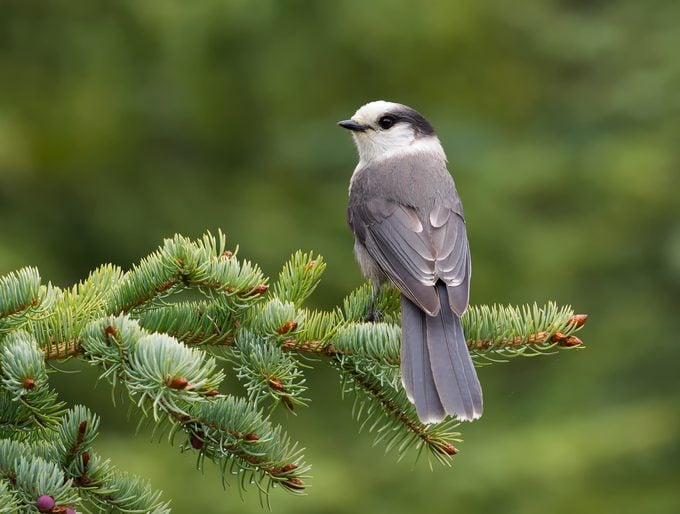
Known as camp robbers because of their habit of nabbing food scraps from campsites, fluffy Canada jays are found in northern forests across the United States and are fearless and inquisitive. The robin-sized bird caches extra food in crevices to survive cold climates, and may even rear its chicks in winter.
Try out the best bird feeders for blue jays.
Northern Cardinal
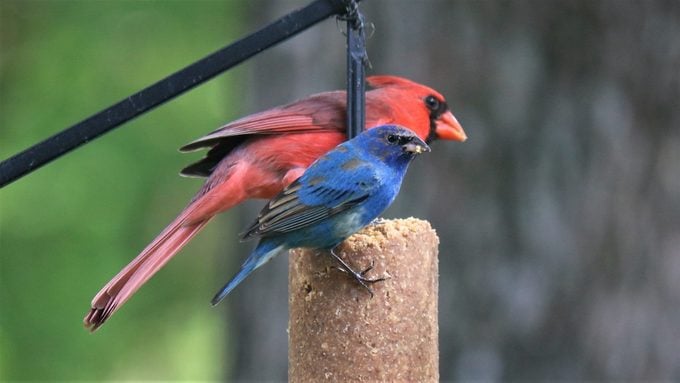
These sizable songbirds have short, thick bills, and both sexes have prominent crests. Bright red males and muted brown females are found in most areas east of the Rocky Mountains and parts of the Southwest. Cardinals often look as if they’re crouched over when sitting, pointing their tail feathers downward.
Follow these proven ways to attract northern cardinals.
Downy Woodpecker
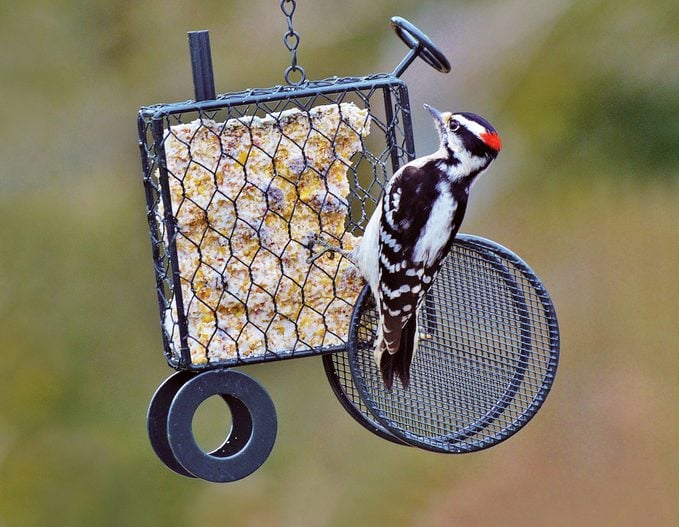
The smallest woodpecker in North America, adult downies can weigh less than an ounce. Found across the country in open woodlands, deciduous woods and even the suburbs, these black-and-white checkered creatures are often members of mixed-species flocks.
Tufted Titmouse
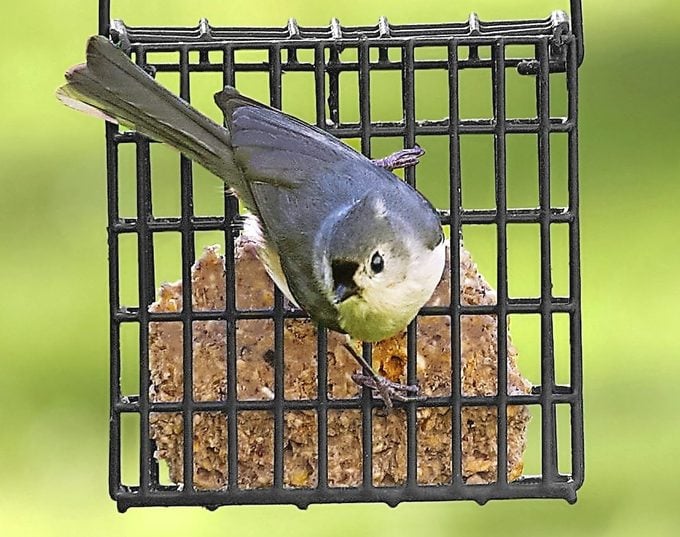
This stout bird features a pointed crest, a rounded bill, large black eyes and a gray body. Spot titmice in the eastern U.S. near open tree canopies, city parks and backyards—and watch as they whack large seeds on hard surfaces.
Find out how to attract titmice to visit your backyard.
Brown Creeper
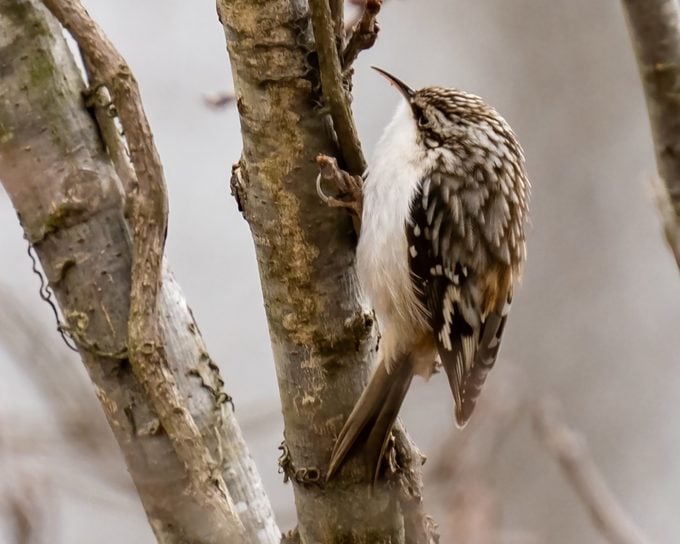
Blending into bark across the U.S., the brown and tan streaked creepers keep their white bellies hidden as they spiral upward around tree trunks. Smaller than a sparrow, brown creepers have slim frames, long tails with stiff tips, and slender, curved beaks. To attract them, smear suet on a tree trunk.
Red-Breasted Nuthatch
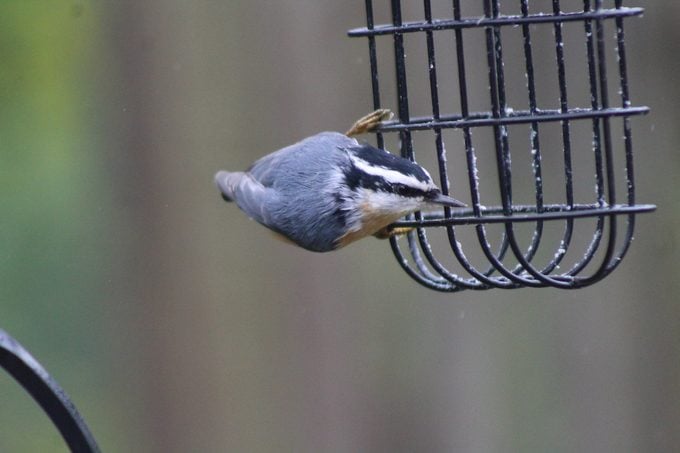
These compact creatures sport sharp features and short appendages. The plump blue-gray birds may appear to have almost no neck under their black and-white patterned heads. Find red-breasted nuthatches throughout the U.S. along tree limbs, creeping in all directions.
Ruby-Crowned Kinglet
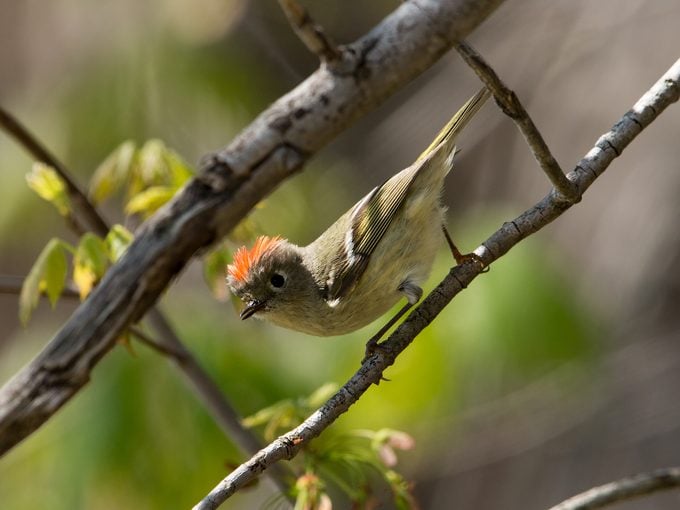
Spot these tiny, energetic birds foraging in a frantic fashion through shrubs and trees across North America. At only 3 or 4 inches long, ruby-crowned kinglets are known for their minuscule green-gray frames, constantly flicking wings, and white eye rings and bars.
7. Will Other Wildlife Eat Suet?
Keep in mind that birds aren’t the only creatures that love suet. The strong-smelling fat in suet attracts mammals, so keep an eye out for local critters such as squirrels, raccoons, rats, skunks, deer or bears. Consider installing a baffle to deter smaller animals.
Here’s our best tips for squirrel-proof bird feeders.
8. Can You Feed Suet in Warm Weather?
Raw suet turns rancid quickly in warm weather. It melts when the temperature rises above 70 degrees and might stick to birds’ feathers. Gooey feathers are dangerous, so raw suet should be served only during the colder months. Cornmeal and peanut butter can also go rancid quicker, Ken says. He also warns that nut butters in high heat can be too sticky for birds’ beaks. Consider alternatives like no-melt suet nuggets or a peanut feeder.
Is it OK to add bacon fat to suet? Here’s what our experts say.
